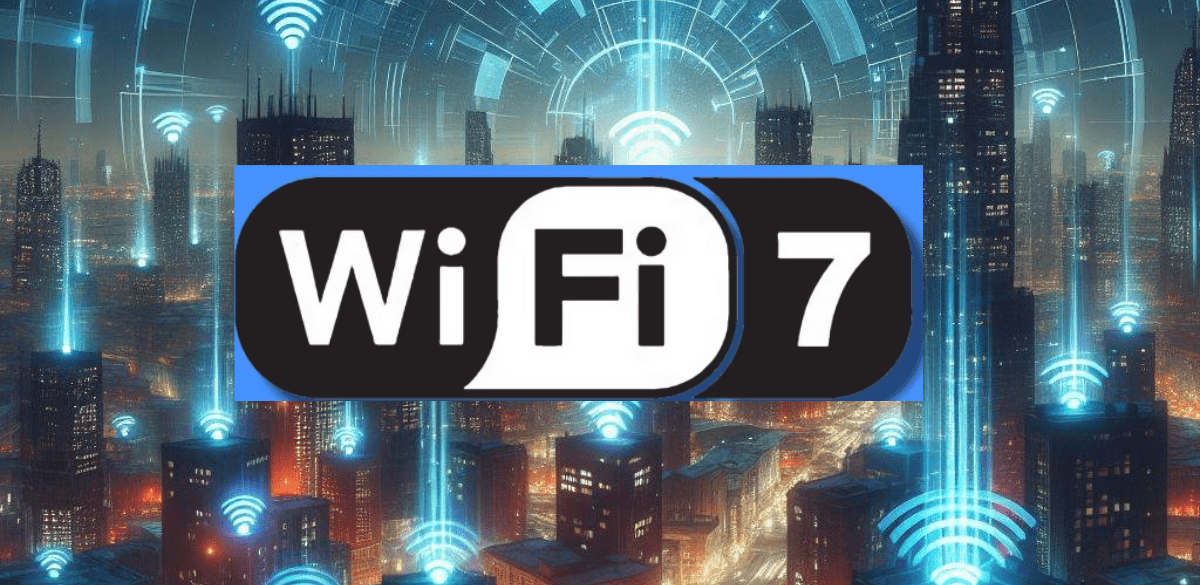Wi-Fi 7 is the newest version of wireless technology. It’s designed to make our internet connections much faster and better. Wi-Fi 7 builds on what earlier versions did, making it even faster, able to handle more devices at once, and making delays shorter. This article looks at Wi-Fi 7 in detail, talking about what it can do, how it works, what devices can use it, what it’s good for, how safe it is, and what might come next.
What Makes Wi-Fi 7 Different?
Increased Speeds
Wi-Fi 7 boasts significantly faster speeds compared to its predecessors, with maximum speeds projected to surpass multiple gigabits per second. This leap in speed enables seamless streaming of high-definition content, rapid file transfers, and smoother online gaming experiences.
Enhanced Capacity of Wi-Fi 7
One of the key highlights of Wi-Fi 7 is its ability to support a greater number of connected devices simultaneously. This enhanced capacity is particularly beneficial in environments with dense networks, such as crowded urban areas, office buildings, and public venues.
Lower Latency
Wi-Fi 7 aims to minimize latency, ensuring quicker response times and improved overall performance. This reduction in latency is crucial for applications requiring real-time interaction, such as online gaming, video conferencing, and remote-control systems.
Technical Innovations Behind Wi-Fi 7

MU-MIMO (Multi-User, Multiple Input, Multiple Output)
MU-MIMO technology allows Wi-Fi 7 routers to communicate with multiple devices simultaneously, optimizing network efficiency and reducing congestion. This results in faster data transmission and better overall network performance, especially in environments with numerous connected devices.
Orthogonal Frequency Division Multiple Access (OFDMA)
OFDMA is a key feature of Wi-Fi 7 that enables more efficient spectrum utilization by dividing available frequency bands into smaller sub-channels. This allows multiple devices to transmit data concurrently, improving network efficiency and reducing latency.
Improved Beamforming In Wi-Fi 7
Wi-Fi 7 incorporates advanced beamforming techniques to deliver stronger and more focused wireless signals to connected devices. This helps extend coverage range, enhance signal reliability, and improve overall network performance, especially in challenging environments.
Compatibility and Transition

Backward Compatibility In Wi-Fi 7
Despite its advancements, Wi-Fi remains backward compatible with previous Wi-Fi standards, ensuring seamless integration with existing devices and networks. This allows users to upgrade to Wi-Fi 7 gradually without rendering their current devices obsolete.
Transition Challenges of Wi-Fi 7
However, Adoption of Wi-Fi 7 may present challenges, particularly in terms of infrastructure upgrades and device compatibility. As with any new technology, widespread adoption may take time, and some older devices may require firmware updates or hardware upgrades to fully leverage the benefits of Wi-Fi 7.
Applications and Use Cases

Internet of Things (IoT)
Wi-Fi 7’s increased speed, capacity, and reliability make it well-suited for powering the growing ecosystem of IoT devices, ranging from smart home appliances to industrial sensors. With Wi-Fi 7, IoT devices can communicate more efficiently, enabling seamless automation and data exchange.
Augmented Reality (AR) and Virtual Reality (VR)
AR and VR applications rely heavily on low-latency, high-bandwidth connections to deliver immersive experiences in real-time. Wi-Fi 7’s enhanced capabilities make it ideal for supporting AR and VR applications, allowing users to enjoy seamless gaming, virtual tours, and interactive experiences.
Ultra-High-Definition (UHD) Video Streaming
With the proliferation of UHD content, there is a growing demand for high-speed, low-latency networks capable of delivering smooth streaming experiences. Wi-Fi 7’s faster speeds and reduced latency ensure uninterrupted streaming of UHD content, even in households with multiple streaming devices.
Security Enhancements

WPA3 Protocol
Wi-Fi 7 incorporates the latest security protocols, including the WPA3 standard, to ensure robust protection against unauthorized access and data breaches. WPA3 introduces advanced encryption algorithms and authentication mechanisms, enhancing the security of Wi-Fi networks and safeguarding sensitive information.
Enhanced Encryption Wi-Fi 7
In addition to WPA3, Wi-Fi 7 implements enhanced encryption techniques to protect data transmitted over the network. By encrypting data at the packet level, Wi-Fi 7 mitigates the risk of interception and unauthorized access, preserving the confidentiality and integrity of user data.
Stay Protected From 5 Dangerous Computer Viruses in 2024.
Secure Your Computer with Best Safety Tips In 2024.
Future Prospects of Wi-Fi 7

Integration with 6G
As wireless technologies continue to evolve, Wi-Fi 7 is expected to seamlessly integrate with future cellular networks, including the upcoming 6G standard. This convergence of Wi-Fi and cellular technologies promises to deliver better connections everywhere and make networks work faster enabling new applications and services.
Expanded IoT Connectivity
With the Increasing number of IoT devices, Wi-Fi 7 has to play a central role in facilitating seamless connectivity and communication between devices. From smart homes and cities to industrial automation and healthcare, Wi-Fi 7’s enhanced capabilities unlock new possibilities for IoT deployment and innovation.
What Is Quantum AI Understand In Simple Way.
Conclusion
Wi-Fi 7 represents a significant leap forward in wireless technology, offering faster speeds, enhanced capacity, lower latency, and improved security. With its advanced features and capabilities, Wi-Fi 7 is helping on the way to connect on the internet, enabling new applications, enhancing user experiences, and driving innovation across various industries.
FAQs (Frequently Asked Questions)
1]Is Wi-Fi 7 backward compatible with older Wi-Fi standards?
Yes, Wi-Fi 7 is backward compatible with previous Wi-Fi standards, ensuring compatibility with existing devices and networks.
2]What are the key benefits of Wi-Fi 7?
The key benefits of Wi-Fi 7 include faster speeds, enhanced capacity, lower latency, and improved security.
3]What is the expected timeline for the rollout of Wi-Fi 7?
Wi-Fi 7 is still in the development stage, with commercial products expected to become available in the coming years.
4]How will Wi-Fi 7 impact the Internet of Things (IoT) ecosystem?
Wi-Fi 7’s increased speed, capacity, and reliability will enable seamless connectivity and communication between IoT devices, unlocking new possibilities for automation and innovation.
5]What security features does Wi-Fi 7 offer?
Wi-Fi 7 incorporates advanced security protocols, including the WPA3 standard, to ensure robust protection against unauthorized access and data breaches.
